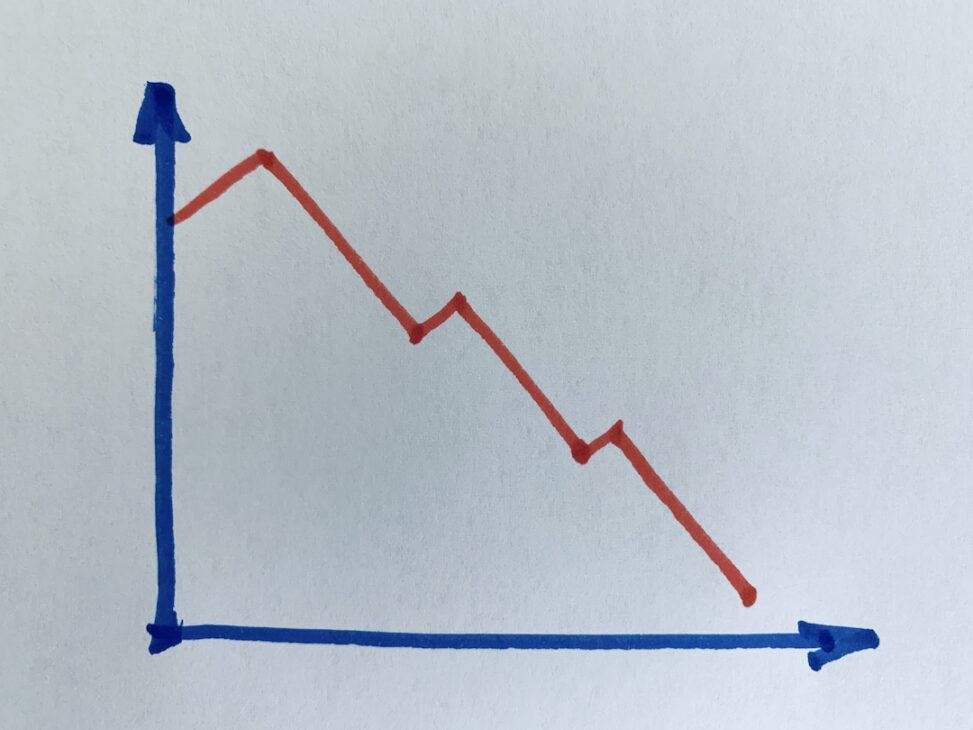The title of this article is a phrase, from 2004, by economist Paul Romer about the competition that the USA was experiencing with the increasing level of education in other countries in the world. Romer was inspired by the slogan “A mind is a terrible thing to waste“, from a 1971 campaign to raise a fund to support higher education for African-American students, a topic that has remained on the agenda for almost 50 years.
I can imagine that you are wondering the reason to use this title in an opinion column, usually dedicated to innovation and entrepreneurship. Crisis situations are fatal for young companies that do not have enough capital reserves to overcome losses in sales. However, Romer’s sentence can be read as a reminder of the positive aspects of downturn periods. Companies like Google and Salesforce, created shortly before the dot-com bubble burst, owe part of their success to the period of less competition during and after that crisis. The crisis, by limiting access to new resources, makes us look with new eyes at the ones we already have and do not value. That was a little bit what happened with the development of tourism in Portugal following the 2011 economic crisis.
Crisis brings not only new problems but also additional restrictions to solve them. Marissa Meyer, a former vice president at Google, said that creativity loves restrictions. An example is a famous scene from the film “Monty Python and the Holy Grail” where the lack of budget to rent horses, led the medieval knights to walk on foot producing the sound of the horse trotting with two haves of a coconut. In Portugal, we use the word “desenrascanço” to express this.
You will be probably saying that the problem is that ideas do not always appear when we need them, and even less when we are surrounded by problems. I have this experience at the beginning of each semester when students tell me they want to attend the entrepreneurship course, but they don’t have good ideas and ask me if I have one to give them. My answer is that, as with other skills, they can learn to generate ideas, and that is what we do in the first weeks of the semester.
An important first step will be to look for a physical and human environment that promotes the generation of ideas. We generate more ideas together with other creatives, optimists or visionaries than with prophets of doom. Fortunately, it is easy to find many representatives of the first group among young university students with whom I usually work. Most of the activities that I organize at Técnico take place in the white room of iStartLab, where the tables have wheels and the walls have paint that can be written on. Students can reconfigure the room to work in groups, using the walls to expose their ideas.
There are several methods for the innovation process and in a previous chronicle (“Challenges and Opportunities (pt)“, May 2019, in English here) I talked about Tina Seelig’s invention cycle that starts with imagination, followed by creativity, to reach innovation and ending with entrepreneurship. Another method is Disney’s creative strategy with three moods: the dreamer, the realist and the critic. The process of generating ideas, itself, is divided into two parts. The first is the divergence where we want to generate many ideas while in the second, the convergence, we intend to evolve into the one we will pursue.
In the first part, all ideas count, because many of those that came to be good started out as ideas considered bad. Creating a business based on the assumption that people would pay to sleep at the home of strangers is an example of an idea that almost everyone considered bad and resulted in Airbnb. One way to have original ideas is to imagine them for the distant future. If you have seen illustrations from the end of the 19th century with predictions of what the world would look like in the 21st century, you can prove the method’s effectiveness. Another way to generate ideas is to look at the recent past and see what has changed. What is possible today that was not last year? What other ideas can be drawn from these? At this stage, you must assume the role of the dreamer in Disney’s creative strategy, while in the cycle of invention you will alternate between imagination and creativity.
In the convergence phase, it’s time to be the realist who seeks achievable approaches to your visionary ideas from the first part. If you’ve done your job well and been creative enough, your ideas may include thought reading or teleport. Can you transform these ideas into something that is new, but not so radical?
The following step is to assume the role of the critic in looking for defects in the idea. Is the change you identified really a trend or is it just a fad? Are you the right person to put this idea in place? If it works, could it become a giant business? Is there an economy of scale? What is the reason for you to think that this is a good idea when most people think it is bad? This is where innovation enters the cycle of invention: how does this idea differ from what already exists?
It is only in the next phase that entrepreneurship enters, that is, the beginning of the idea’s validation process. Here, too, the crisis is useful. In a normal situation, You would look for resources to develop your idea or create the first prototype of your product to probably find a problem and have to start over. Without so many resources, it is likely that you will be able to do the same with much less. Maybe you just need two halves of a coconut.
Adapted from my column in Jornal i of June 9th, 2020

 Português
Português